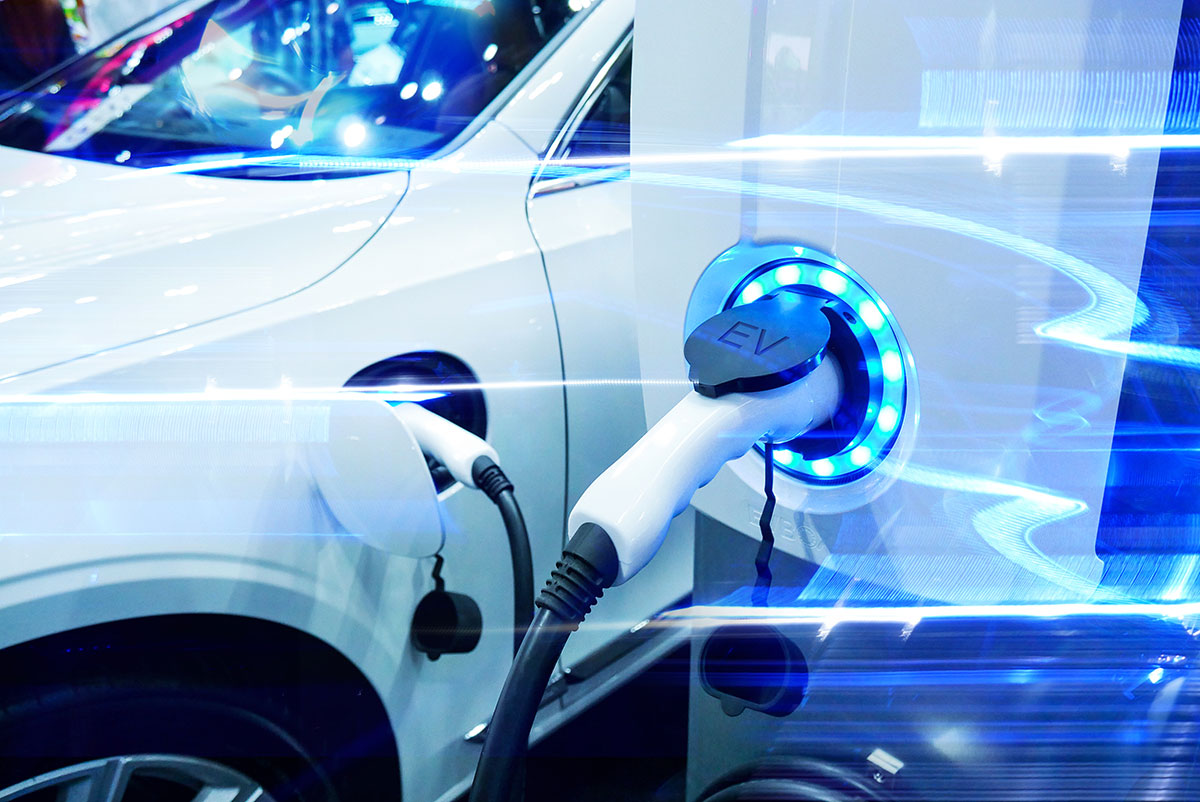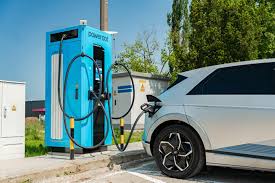How Electric Vehicles Are Shaping the Future of the Automotive Industry

Introduction
Electric vehicles (EVs) are no longer a novelty—they are the future of the automotive industry. With concerns about climate change, rising fuel prices, and air pollution, EVs have gained traction as a viable alternative to traditional gasoline-powered cars. As technology advances and consumer demand grows, EVs are becoming more accessible, efficient, and affordable. This article explores the rise of electric vehicles, the key benefits they offer, the challenges they face, and how they are shaping the future of transportation.
1. What Are Electric Vehicles (EVs)?
- Definition
- Electric vehicles are cars or other types of vehicles that run on electricity instead of traditional gasoline or diesel. They use electric motors powered by batteries, which can be recharged through charging stations.
- Types of Electric Vehicles
- Battery Electric Vehicles (BEVs): These are fully electric cars that rely solely on battery power, with no backup gasoline engine.
- Plug-in Hybrid Electric Vehicles (PHEVs): These vehicles combine an electric motor with a gasoline engine, allowing for both electric and conventional driving modes.
- Hybrid Electric Vehicles (HEVs): Similar to PHEVs but with a smaller battery, these cars automatically switch between the electric motor and gasoline engine.
2. Key Benefits of Electric Vehicles
- Environmental Benefits
- Reduced Emissions: EVs produce zero tailpipe emissions, making them an eco-friendly choice that helps reduce air pollution and greenhouse gas emissions.
- Energy Efficiency: EVs are more energy-efficient than traditional internal combustion engine vehicles, converting a higher percentage of energy from the battery to power the wheels.
- Cost Savings
- Lower Operating Costs: EVs are cheaper to operate than gasoline-powered cars because electricity is less expensive than gasoline, and EVs have fewer moving parts, which reduces maintenance costs.
- Incentives: Many governments offer tax credits, rebates, and incentives to encourage EV adoption, making them more affordable for consumers.
- Energy Independence
- By reducing reliance on oil and gasoline, EVs contribute to energy independence, allowing countries to rely more on renewable energy sources and reduce their dependence on fossil fuels.
- Quieter and Smoother Ride
- EVs are quieter than traditional vehicles, providing a smoother and more peaceful driving experience. The absence of a combustion engine also means less noise pollution.
- Lower Maintenance Costs
- EVs have fewer moving parts than traditional vehicles, which means less wear and tear. There’s no need for oil changes, and components like brakes tend to last longer due to regenerative braking.
3. The Impact of EVs on the Automotive Industry
- Innovation in Vehicle Design
- Electric vehicles have forced automakers to rethink vehicle design, with the battery pack often placed under the floor to maximize cabin space. This has led to the development of new, innovative car designs, such as Tesla’s minimalist interior and compact electric vehicle models from traditional manufacturers like Ford and Volkswagen.
- Increased Investment in Green Technologies
- Major automakers are investing billions of dollars in electric vehicle research and development, as well as building manufacturing plants dedicated to EV production. This shift is accelerating the transition to greener, more sustainable transportation options.
- Supply Chain Transformation
- The rise of EVs is transforming the automotive supply chain, with a focus on sourcing materials for batteries, such as lithium, cobalt, and nickel. Companies are also looking into alternative, more sustainable ways of sourcing these materials.
- Job Creation in New Industries
- The shift to EVs is creating new jobs in areas like battery manufacturing, electric motor production, and the development of charging infrastructure. The demand for skilled workers in these sectors is increasing as the automotive industry transitions to electric.
4. The Challenges Facing Electric Vehicles
- Range Anxiety
- Although EVs are improving in terms of range, many consumers still worry about running out of battery before reaching a charging station. However, with advancements in battery technology and the expansion of charging networks, range anxiety is slowly being addressed.
- Charging Infrastructure
- While there has been significant growth in the number of charging stations, the infrastructure still needs to improve to accommodate the increasing number of EVs on the road. More widespread charging stations, especially fast-charging ones, are necessary to support the growth of electric vehicles.
- Battery Technology and Costs
- While EV battery technology has improved significantly, the cost of batteries remains a significant barrier to widespread EV adoption. Battery life and the environmental impact of battery disposal also remain concerns that need to be addressed in the future.
- High Initial Cost
- The upfront cost of electric vehicles is generally higher than that of traditional gasoline vehicles, although this gap is narrowing as technology advances. Government incentives and falling battery prices are helping to make EVs more affordable.
5. The Future of Electric Vehicles
- Improved Battery Technology
- Advances in battery technology are expected to significantly improve the range, performance, and affordability of electric vehicles. Solid-state batteries, which promise to be more efficient and longer-lasting, are one of the most exciting developments in the field.
- Wider Adoption of EVs
- As more automakers release electric models, and as charging infrastructure continues to expand, electric vehicles are expected to become more mainstream. The shift from gasoline-powered cars to EVs will accelerate in the coming decades, with many countries setting ambitious targets for phasing out internal combustion engine vehicles.
- Integration with Renewable Energy
- Electric vehicles will play a crucial role in integrating renewable energy sources, such as solar and wind power, into the energy grid. By using EVs as mobile energy storage units, grid operators can balance supply and demand more effectively, reducing reliance on fossil fuels.
- Autonomous Electric Vehicles
- The future of electric vehicles is also closely tied to the development of autonomous driving technology. Self-driving EVs could revolutionize the way we travel, with fleets of autonomous cars providing shared, on-demand transportation services.
- Global EV Market Growth
- The electric vehicle market is expected to grow exponentially over the next decade, driven by government incentives, environmental concerns, and advancements in technology. Many countries are setting ambitious goals to transition to 100% electric vehicle fleets by 2030 or 2040.
6. Leading EV Manufacturers
- Tesla
- Tesla is the most recognized name in the electric vehicle market, known for its innovative approach to EV design and technology. The company’s vehicles, including the Model S, Model 3, Model X, and Model Y, have set the standard for electric cars in terms of performance, range, and innovation.
- Volkswagen
- Volkswagen has committed to transitioning its entire fleet to electric by 2030. With the launch of the ID. series, VW aims to make EVs affordable for the masses.
- Nissan
- Nissan’s Leaf was one of the first mainstream electric vehicles and remains a popular choice for consumers looking for an affordable EV. The company continues to expand its electric vehicle lineup with models like the Nissan Ariya.
- Ford
- Ford has made a significant push into the electric vehicle market with its Mustang Mach-E SUV and the upcoming all-electric Ford F-150 Lightning, combining the power of American-made trucks with zero-emissions driving.
- BMW
- BMW has been at the forefront of EV innovation with its i3 and i8 electric models, and the company continues to expand its EV offerings with models like the iX3 and i4.
Conclusion
Electric vehicles are revolutionizing the automotive industry and playing a crucial role in addressing environmental challenges. While the transition to EVs comes with challenges such as infrastructure and cost, the future looks promising as technology continues to evolve. With widespread adoption, improvements in battery technology, and increasing investments from automakers, electric vehicles are set to become the dominant force in the automotive world. By making transportation cleaner and more efficient, EVs will help shape the future of sustainable mobility.





